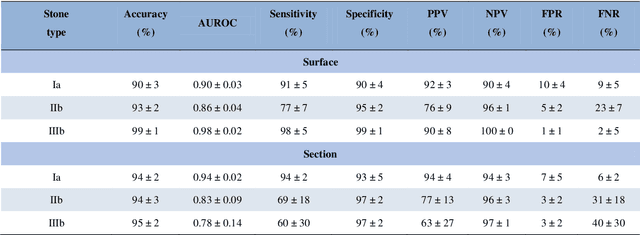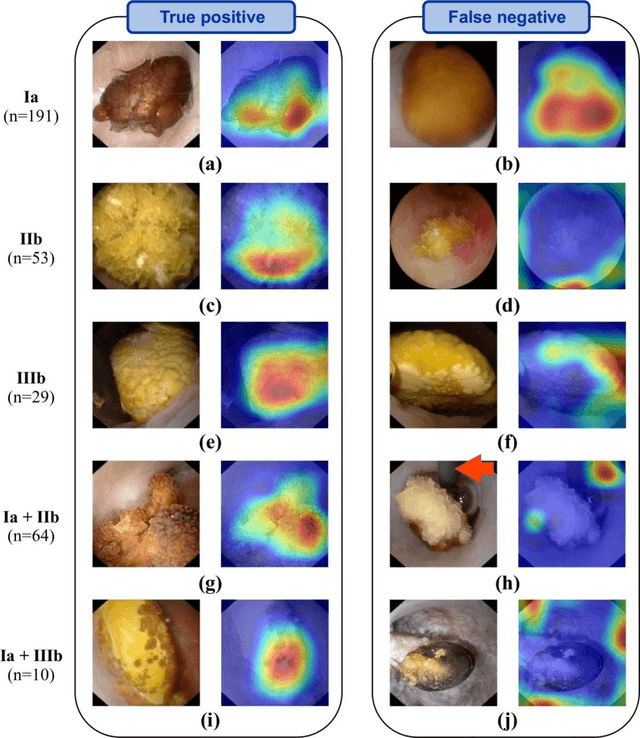Towards Automatic Recognition of Pure & Mixed Stones using Intraoperative Endoscopic Digital Images
Paper and Code
May 22, 2021

Objective: To assess automatic computer-aided in-situ recognition of morphological features of pure and mixed urinary stones using intraoperative digital endoscopic images acquired in a clinical setting. Materials and methods: In this single-centre study, an experienced urologist intraoperatively and prospectively examined the surface and section of all kidney stones encountered. Calcium oxalate monohydrate (COM/Ia), dihydrate (COD/IIb) and uric acid (UA/IIIb) morphological criteria were collected and classified to generate annotated datasets. A deep convolutional neural network (CNN) was trained to predict the composition of both pure and mixed stones. To explain the predictions of the deep neural network model, coarse localisation heat-maps were plotted to pinpoint key areas identified by the network. Results: This study included 347 and 236 observations of stone surface and stone section, respectively. A highest sensitivity of 98 % was obtained for the type "pure IIIb/UA" using surface images. The most frequently encountered morphology was that of the type "pure Ia/COM"; it was correctly predicted in 91 % and 94 % of cases using surface and section images, respectively. Of the mixed type "Ia/COM+IIb/COD", Ia/COM was predicted in 84 % of cases using surface images, IIb/COD in 70 % of cases, and both in 65 % of cases. Concerning mixed Ia/COM+IIIb/UA stones, Ia/COM was predicted in 91 % of cases using section images, IIIb/UA in 69 % of cases, and both in 74 % of cases. Conclusions: This preliminary study demonstrates that deep convolutional neural networks are promising to identify kidney stone composition from endoscopic images acquired intraoperatively. Both pure and mixed stone composition could be discriminated. Collected in a clinical setting, surface and section images analysed by deep CNN provide valuable information about stone morphology for computer-aided diagnosis.
 Add to Chrome
Add to Chrome Add to Firefox
Add to Firefox Add to Edge
Add to Edge